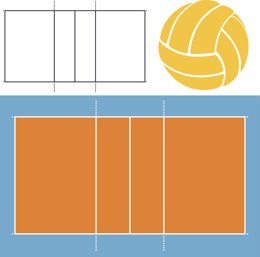Easy Fillets
My views about the dreaded chore of cleaning the catch after a long day of fishing changed dramatically on a hot summer day some 23 years ago at Lake Cumberland.
I had just come in from spending 12 exhausting hours fishing near Wolf Creek Dam. For my efforts, I had several nice walleyes, a half-dozen crappies and a channel catfish weighing about three pounds. But while I was basking in the glow of angler success, I was also not looking forward to the task of cleaning the fish, especially the channel cat -- since I didn't have a pair of pliers in my tackle box.
Walking up the ramp incline at Cumberland Lake State Resort Park to get my car, I noticed three or four people gathered around the tailgate of a pick-up. Figuring someone had made a good catch, I wandered over to see what was happening.
Holding court on the tailgate was a fellow named Allen Lee who hails from Chattanooga, Tennessee. I've known Allen for many years and fished with him enough to know he's one of the best. He's also one of the most creative folks I've ever met when it comes to innovative tinkering.
As part-owner of a hardware store, Lee was trying to sell anglers a battery-powered carving knife he'd converted from standard A.C. electrical power. "After you've used one of these to fillet fish," he said, "you'll never go back to a standard filleting knife." After waving the knife around during the sales pitch, he lit into a basket of crappie. In minutes he produced a pan filled with some of the cleanest fillets I'd ever seen. And he hadn't even gotten his hands wet! The tailgate demonstration was the first I'd ever seen the electric carving knife used for filleting. It clearly showed how easy and mess free the technique is for filleting crappie, but what about a tough-to-clean catfish, I asked.
My answer came minutes later when I produced the channel cat I'd caught. Lee cleaned it so fast I could hardly believe it.
Since then I haven't gone fishing without an electric filleting knife in my duffel bag -- and neither have thousands of other Kentucky anglers who've discovered this modern route to easy fish filleting over the years.
Today, use of the electric fish filleting knife is widespread. At Kentucky Lake, retirees pick up good money each spring during the crappie spawn by dressing out thousands of pounds of this delicious panfish for visiting anglers.
The electric filleting knife works on big fish, too. Last year I watched Kentucky Lake fishing guide Darrell Van Vactor fillet several 15-20 pound stripers, using an extra long set of blades that came with his Electric Fisherman model made by the Mister Twister Company. That's his favorite model for big fish, because it comes with a souped-up motor that can drive the blade through large rib bones without burning up.
According to the Sport Fishing Institute, there are more than 46 million freshwater anglers in the U.S. who average catching 1,664,744,000 fish annually. Of this huge number and tonnage of freshwater fish, it's estimated a large percentage of the catch never reaches the supper table. Catch and release, of course, is part of the reason. However, many fish don't reach the table because the catch hasn't been taken care of properly.
Experts know that harvesting fish for the family table begins with preparation for the day's fishing. This starts with a cooler half-filled with crushed ice for anglers fishing from the bank or for those whose boats aren't equipped with live wells. Commercial fishermen the world over know that placing fish directly on ice as soon as they removed from hook or net helps retain the fresh flavor of seafood-including all freshwater species -- better than any other preserving method.
During spring or late autumn when water temperatures are cold fish can live for long periods on stringers or in live wells. However, the moment the fish dies or is removed from the water, it should be placed on ice to await cleaning.
While poorly kept fish is one of the reasons why many anglers fail to utilize their catch, perhaps a greater problem is the actual fish-cleaning chore itself. Facing this sometimes difficult task when you're tired certainly isn't much fun. More often than not, the fish cleaning facilities are inadequate and the filleting knife isn't as sharp as it should be. In many instances, anglers simply don't know how to properly fillet a fish to begin with. Add all this to the time consuming ordeal of carving up a large, number of slippery finsters when you'd rather be sipping a cool drink and it's easy to see why some fishermen look for the nearest neighbor to give their catch.
The modern method of fish filleting using an electric knife is an ideal remedy to the problem. With as few as a couple of fish to practice on, the average person can quickly produce tasty fillets worth of the close inspection of the most discriminating chef. Unlike 20 years ago when the electric carving knife was first introduced to the American consumer, power-operated filleting knives are now sold at most department and fishing tackle stores as well as from most catalog suppliers of sporting equipment.
While just about any model of electric carving knife featuring sharp, serrated blades works well for filleting fish, fishing guides such as Van Vactor recommend heavy-duty models that are designed to do yeoman service for years to come. Mostly they believe the standard electric-powered models are best but also note that battery operated knives are fine for limited use. As Van Vactor points out, models that feature several blade lengths to take care of filleting fish ranging in size from a small bluegill to a large striper are the best all-round choice. The knife, he adds, should he designed with a trigger-type on-off switch that is easy to reach with the forefinger and has a safety lock to prevent accidentally starting the motor. A heavy-duty, coiled cord and convenient blade release are also handy.
As with all electrically powered appliances, caution must he used when operating an electric filleting knife. Care should he taken to prevent the cord or main body of the knife from coming in contact with water. If the knife should happen to get wet, it must be dried thoroughly before using it again.
In addition, be sure the floor of the fish cleaning area is constructed of wood or other non-conductive materials. Avoid metal floors entirely. If an electrical outlet isn't close by, use only a heavy-duty extension cord to connect the knife to the receptacle. An elevated board, one to two inches thick and a foot wide, is handy for filleting most fish.
Fillets should be placed in a container partially filled with crushed ice. Remember, the freshest tasting fillets will be those kept chilled from the time they're caught to the time they're prepared in your favorite recipe.
Late Spring Bassin
Shes Sold on Fishin - Fishers Smorgasbord


